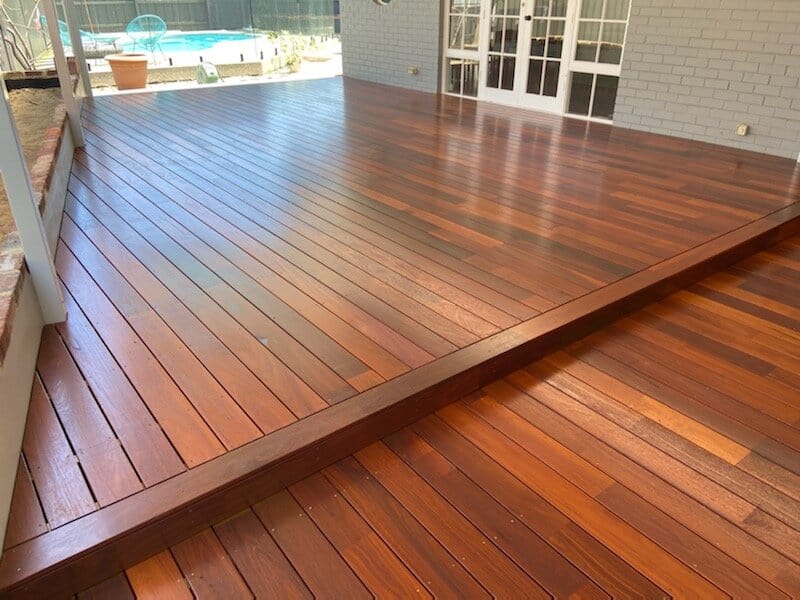Your deck adds beauty and value to your home. Its purpose is multifold: it can be an oasis to escape from the sun, or it can be a special place to congregate with friends and family. With attention and care, this outdoor space can last a lifetime. The best way to extend the life of your deck is to recognise when it’s time for a bit of deck restoration. Deck maintenance is easy when done properly and often.
Your deck is exposed to the harsh outdoor elements, so it is important to address any damage it may sustain in the early stages rather than leaving it to deteriorate and become a bigger problem later on. If you are a do-it-yourself enthusiast, it’s the perfect time to roll up your sleeves and give your deck the love and care it deserves so it can serve you for years to come.
In this article, you will learn how to address and fix deck problems, in four steps, without the need for professional intervention. Follow these steps to have your old deck looking like new in no time!
1. Inspecting your deck for damages
The effect of different weather conditions, such as the rain and high heat, combined with UV damage can break down the structure of your timber decking. Inspect your deck’s entire surface thoroughly, especially where your deck makes contact with the ground or where wood is connected with wood. You want to make sure there is no structural damage such as wood rot. If you can jostle the wood or sink a screwdriver into it easily, the wood must be replaced.
2. Cleaning your deck
You should be washing your deck annually. Pressure washing is the most effective method to remove dirt and peeling paint from wood. If you regularly maintain your deck, you should be able to restore the timber of your deck with a deck cleaner.
If you are restoring a neglected outdoor deck, or one that has been previously coated with paint or stain, you may require a stain or paint remover. Always wear protective gear such as gloves, and take the proper precautions to ensure your lawn or garden is insulated from any toxic products you apply.
If you have varnished or treated wood such as pine and want a stained deck, the outer coatings must be stripped with paint thinner and then cleaned. If your deck already has a clear finish or a transparent wood stain, skip the paint stripper, and clean it with a wood deck cleaning product.
3. Sanding your deck
You can sand your wood deck with a belt sander, palm sander, sanding sponge, and lots of sunshine. This is a very dusty process, so use a respiratory mask, work gloves that fit and eye protection.
This step is important to prevent any future problems, so take enough time sanding your deck until it is completely clean of mildew, fungus or rot before moving on to the next step.
4. Staining or oiling your deck
The final step to restoring your deck is finishing it off with a fresh coat of decking oil or wood stain.

Decking oil: A special decking oil will protect your deck’s wood from both weathering factors and harmful UV rays. The oil works naturally to moisturise the wood, which, in turn, helps fight decay. Choosing the best decking oil depends on your desired look, your deck’s usage, and the type of timber your deck is made of.
Decking oils come in a number of colours that go from a dark and rich shade to completely un-tinted. They are even available in colours that match popular woods for decking like Merbau and Jarrah. Decking oils in general are not intended to dramatically change the look of the wood. Apply as much product onto the wood as possible in thin coats, and wait approximately a week for it to dry before reapplying.
Wood Stains: Stains have all of the advantages of decking oils with the added benefit of sealing the wood, which creates another layer of protection from the environment. You can also stain composite decking, to achieve desired colours and additional protection.
When staining your deck, it is best to apply your stain with a special stain brush, which works the stain into the surface of your deck and helps control the uniformity of your application. Sprayers will not give you this type of control, and they can be very messy to clean up after. Roller brush application may be faster, but it tends to create a pooling of the stain in one place and therefore causes problems like peeling.
Stains will permanently alter the look of your deck, so be careful when choosing the right stain for your wood:
- Clear – provides no protection, so it is not appropriate for outdoor use
- Translucent – accentuates the grain and only needs one application
- Semi-transparent – allows for a natural wood look with a fairly consistent colour
- Semi-solid – has more pigmentation than a semi-transparent stain with less wood showing through
- Solid – closer in application to a paint and allows for a perfect uniform colour
What’s next?
Deck restoration might feel like a daunting task, but before you call a professional, see what you can do yourself to give your deck a makeover.
If you are not afraid to use a few tools and break a sweat, you will be able to clean, sand, and oil or stain your deck and enjoy the fruits of your labour for years to come.
If you want more timber decking tips, check out Austim’s timber blog.



































